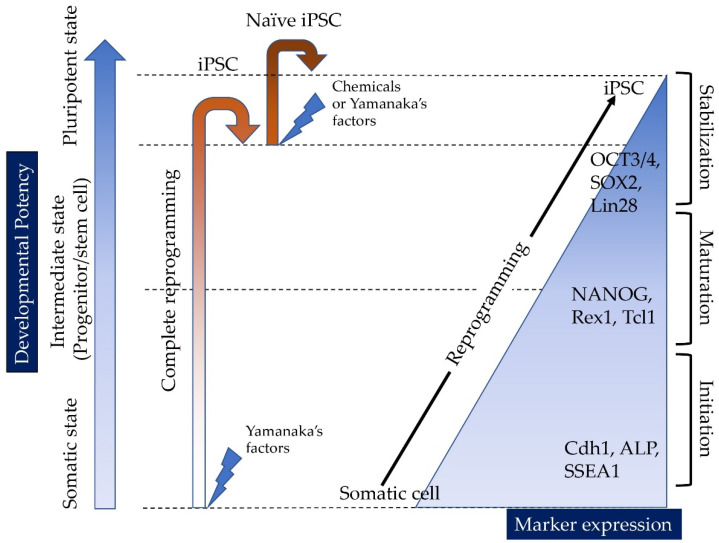Figure 1.
Cell state and molecular events during the reprogramming of somatic cells into iPSCs. When complete reprogramming occurs, somatic cells are successfully converted into iPSCs. The resulting iPSCs can be further reprogrammed into naïve iPSCs through transfection with vectors carrying Yamanaka’s factors or via treatment with chemicals. There are at least three phases with respect to (de-)differentiation (“somatic state”, which may correspond to the initiation stage, “intermediate state”, which may correspond to the maturation stage, and “pluripotent state”, which may correspond to the stabilization stage), according to Samavarchi-Tehrani et al. [12]. Importantly, several molecular markers define each of the above phases, according to Samavarchi-Tehrani et al. [12] and Polo et al. [13]. CDH1, E-cadherin; ALP, alkaline phosphatase; SSEA-1, stage-specific embryonic antigen 1; NANOG, nanog homeobox; REX1, reduced expression protein-1; TCL1, T cell lymphoma breakpoint 1; OCT3/4, octamer-binding transcription factor-3/4; SOX2, sex-determining region Y-box 2; LIN28, lin-28.

